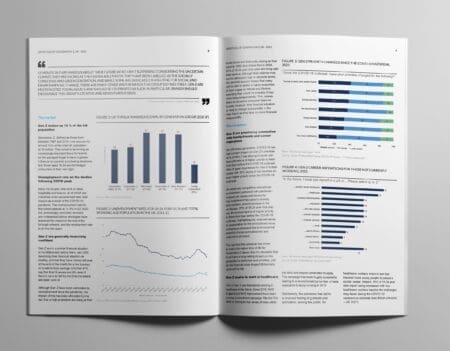Each month Mintel’s Head of Global Market Navigator, Peter Ayton, examines the global market implications for a particular category. This month he focuses on the dishwashing market.

Market basics
Each market segment has some fundamental conditions; although all naturally need a reliable supply of water. The hand segment requires, additionally, only a sink or bowl: the machine segment (and dependent ancillary products, such as salt and pre-wash sprays) naturally needs a dishwasher, for which ownership requires a good supply of electricity and the means to have purchased the kit.
Obvious – right? But in most countries these are givens – and yet the markets have not evolved in the same way. The graphic shows the sizes of the three segments in selected countries relative to the global average (Index 100). So you would expect to see the more affluent and larger countries at top and the less populous and poorer countries at the bottom.
US dominance
Indeed, there is the US at the top of all the bottles: the market value for machine products is almost nine times the global average. Nevertheless, hand washing of dishes is still prevalent: the US has sales some seven times the global average.
The relative position in the graphic is a key indicator of the state of the dishwashing sector. If the relative importance of each segment reflected the global pattern then they would all be level. This is clearly not the case.
Plugged in Europe
Germany has the second largest machine products and ancillary markets; but with hand washing it is much lower at only a third of the average. Norway has a machine products’ segment which defies the country’s size; it has the 11th largest market, ahead of Japan which has a population some 25 times larger. In this affluent Scandinavian country, the dishwasher has largely supplanted hand washing whose products represent the smallest market size of the GMN countries. Like other Nordic countries the high standard of living and certainly ready supply of water (as many a sodden tourist to the fjords will testify) has created a market for machine products.
Handy Asia
In Asia, China represents the second largest hand washing market, but has a machine products size only a twentieth of the average. The market in India is confined to the hand washing sector. Even though there is a burgeoning middle class, dishwasher ownership is pitifully small. There is plenty of cheap labour available to do such chores.
Middle tier contrasts
Mexico and Turkey, with their similar standards of living and white goods manufacturing capacity, exemplify how differently the market can evolve. The former has a machine products’ size of only 1% of the average (with virtually no ancillary sales), by contrast to handwashing where it is some 38% larger then the average. Turkey has a more even distribution suggesting it is at a mid-point in this market’s development.
However, in the former, piped water supply is not so reliable, if it exists at all. Dishwasher machines are expensive and confined to the richer sections of society. This contrasts with Turkey where piped water reaches the vast majority of the population and where dishwasher sales are almost twice that of Mexico, despite its smaller population.


















![[WATCH] 2 household care brand innovations tapping into the upcycling ingredient trend](https://www.mintel.com/app/uploads/2022/10/SocialMedia_EMEA_Upycling-Ingredient-Trends_Blog_1000x305-1.jpg)




















